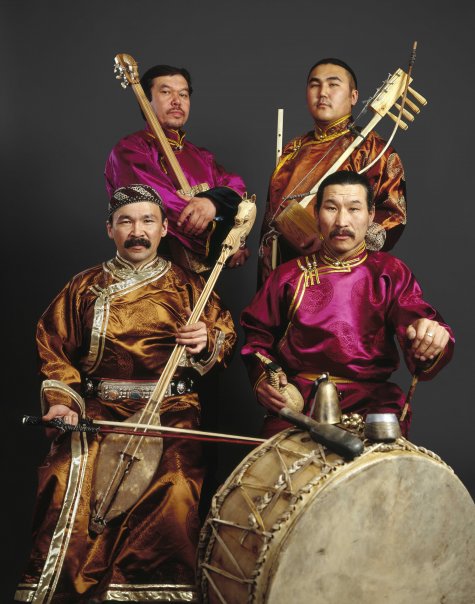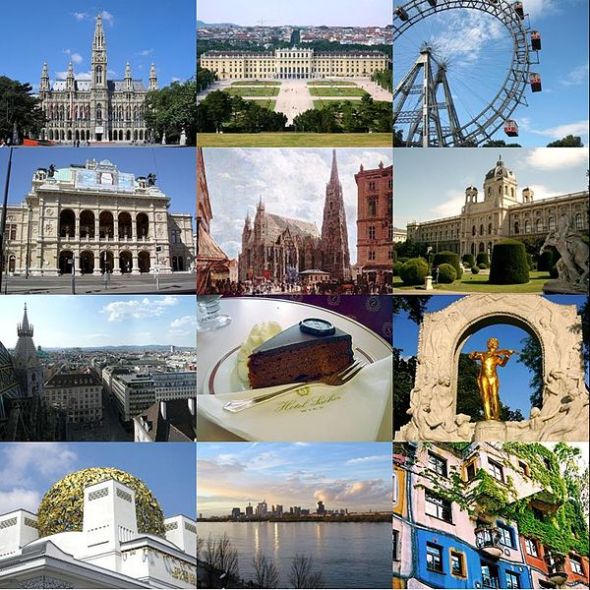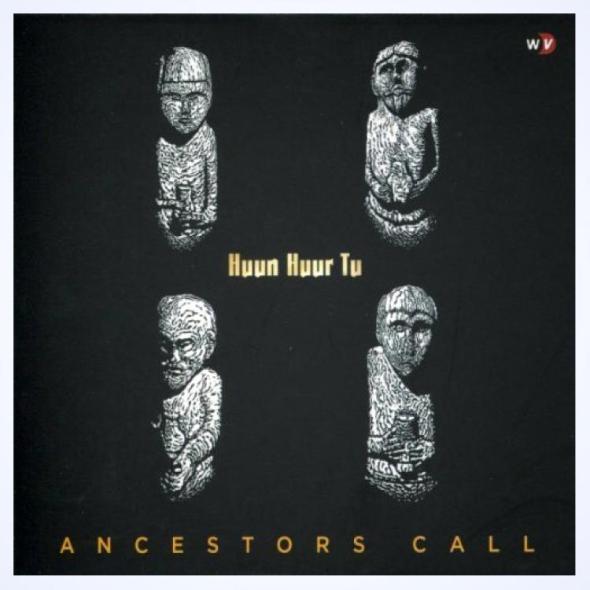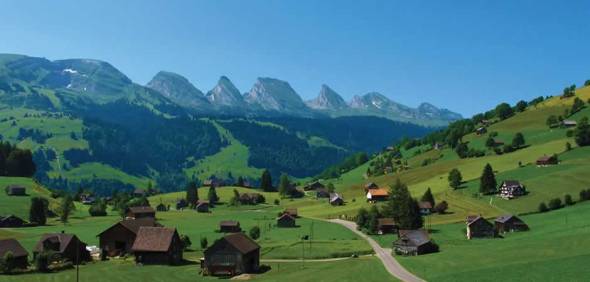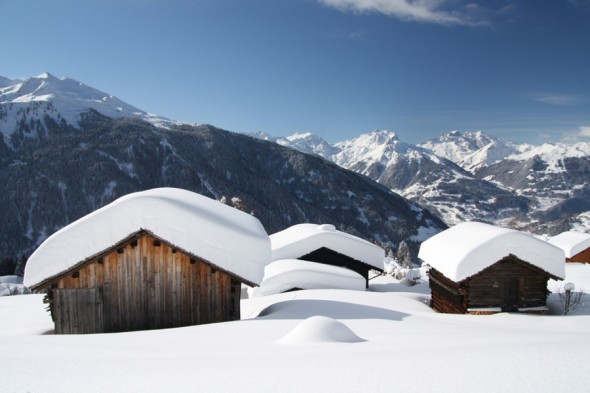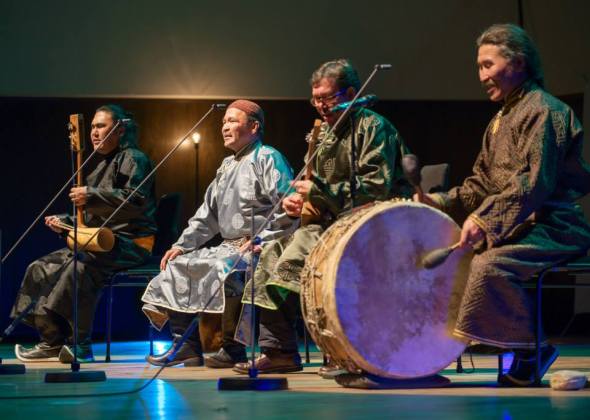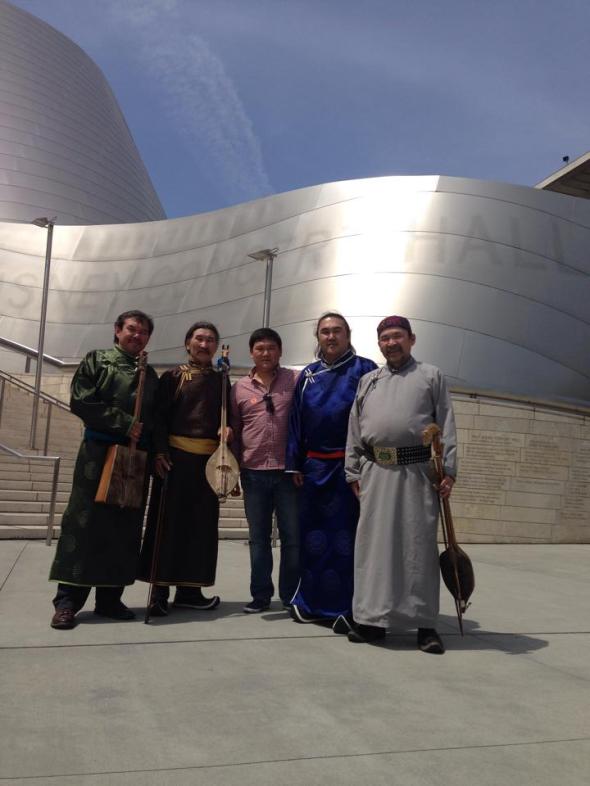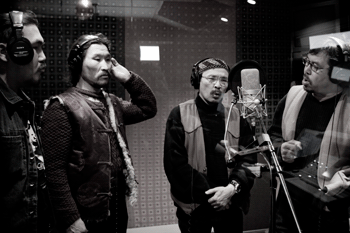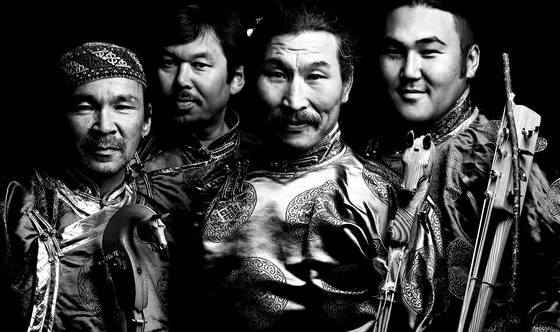Huun-Huur-Tu will have a concert at PLATONOV VORONEZH FESTIVAL on 12june

Huun-Huur-Tu,Russia
Tuvan throat singing ‘xoomei’
Philharmonic HallInternational Platonov Arts Festival, named after the greatest Russian writer of the twentieth century Andrey Platonov, has been held in Voronezh since June 2011. Created under the direct patronage of the Governor of Voronezh Region Alexey Gordeev, the festival has become the major cultural project in the region and one of the dynamically developing multidiscipline festivals in Russia. It provides a unique opportunity to residents of Voronezh and of the surrounding areas to enjoy the outstanding creative achievements in various art forms. It is a bright new stage in the development of culture of Voronezh region, which is intended to approve Voronezh as one of the leading centers of the Russian culture.
On the official Day of Russia the most famous internationally acknowledged ethno-music band of the former Soviet Union, throat singers of Tuva, perform in Voronezh.
The republic Tuva as a part of Russian Federation is located in southern Siberia and borders on Altai and Mongolia, Forests, mountains, and steppe make up a large part of the geography.
The members of Huun-Huur-Tu and other Tuvan throat singers can produce more than one pitch simultaneously while singing. No one in the rest of the world is entirely sure how they do it, but most Tuvans learn the skill as children. It involves singing one tone normally while amplifying the tone’s harmonics—the quieter, higher tones that are part of any sounding pitch (heard, for example, when the lip of a bottle is blown hard)—with manipulations of the larynx, lips, tongue, jaw, and soft palate.
Huun-Huur-Tu’s members can even produce short melodies in one “voice” along with single notes.
The Tuvan acoustic quartet Huun Huur Tu proves that Tuvan music can take plenty of intelligent innovation. Using traditional instruments and drawing subtly on 20th-century composers, funky rhythms, and the palette of electronica, Huun Huur Tu transform ancient songs into complex acoustic compositions.
Since 1993 the group made repeated tours of the United States and also performed in Europe, Japan, and (in 1999) Australia. 2000 the band performed life in the opening and closing of the BBC Life Music festival. 2012 the band was nominated to the BBC World Music Award.“A single voice can sound like three, and the overlapping tones are almost deceptive in their depth and complexity, creating the illusion that there is actually more going on than first meets the ear. This is not particularly uptempo music, but it is intensely spiritual.”
THE CHICAGO TRIBUNE
“The Tuvans will ride into your brain and leave hoofprints up and down your spine.”
THE SAN FRANCISCO BAY GUARDIAN
“A rustic joyousness and unadulterated expressiveness come out of these musicians.”
JAZZ TIMES
“The members of Huun-Huur-Tu are perhaps the best known practitioners (of throat singing) and accompany themselves on all manner of strange and wonderful instruments… The resulting sound is as compelling as a wild gallop across the steppes.”
THE OREGONIAN (Portland)MUSIC PROGRAM:http://en.platonovfest.com/musica
Huun-Huur-Tu in SCHAAN/Liechtenstein 28May,2014
28.05.2014 SCHAAN/Liechtenstein
Venue:TAK
Time: 20:00 h
Huun-Huur-Tu in ZÜRİCH/Switzerland May27,2014
27.05.2014 ZÜRİCH/Switzerland
Venue:Haus Appenzell
Time: 20:00 h Der Abend ist eine geschlossene Veranstaltung und es sind keine Eintrittskarten erhältlich
Huun-Huur-Tu in OFFENBURG/Germany May26,2014
26.05.2014 OFFENBURG/Germany
Venue:Spitalkeller
Time: 20:00 h
Huun-Huur-Tu in WIEN / Austria 22May,2014
22.05.2014 WIEN / Austria
Venue: Sargfabrik (Venue phone: +43 1 98898111)
Time: 20:00 h
Huun-Huur-Tu (A-Shoo-De-Ke-Yo Lyrics in English)
When my trotting dun is trotting
the fog on the ground clears up
When the eloquent girl manifests herself
The Seven Stars conjoin
My sweetheart’s two eyes
are like the stars that rise late
Her coarse braid
is like the cedar of my taiga pasture
When my ambling dun is ambling
the first fog clears up
When my witty dear manifests herself
The first stars conjoin
Its children are bold,
cheerful and merry, deng-deng
Its peoples are free
it is our Tuva, deng-deng
My young beloved’s two eyes
are like the stars that shine in the evening
Her braid born in autumn
is like some land’s cedar
http://www.tyvawiki.org/wiki/Aa-Shuu-Dekei-Oo
Huun-Huur-Tu – Eki Attar (Good Horses- Lyrics in English)
Good Horses
On the swift steed’s head
Bridle and bit are rinkling-rinkling
Remembering the beloved above all
My heart is beating pit-a-pat
On my good bay horse’s head
Saddle and rein are rinkling-rinkling
On my sweetheart’s braid
Her braid ornament is swaying-swaying
Trotting up the river Khemchik
Such is the pace of the arched dun horse
Always coming when evening falls
Such is the habit of my young love
Trotting clip-clop clip-clop
It is the trot of my dark-bay horse
Always smiling softly
Such is the habit of my sweet friend
The silver bridle on my horse’s head
Is it enviable, brother-in-law?
Your lambkin staying with me
Is she desirable, brother-in-law?
The golden saddle, rein, and bit
Are they enviable, brother-in-law?
Your precious staying with me
Is she desirable, brother-in-law?
On the shy colt’s head
Bit and rings are rinkling-rinkling
On my young love’s braid
Her braid ornament is swaying-swaying
I long to ride my skewbald horse
On whose flank a mark is branded
I long to meet the beloved girl
On whose fingers rings are stuck
Read more Translation : http://www.tyvawiki.org/wiki/Eki_Attar
Huun-Huur-Tu Ödügen Tayga ( Lyrics in Tuvan,Turkish,English)
Ödügen Tayga
Ödügen Tayga čurttug-la men
Öleŋ sigen čïttïg-la men
Čalïm tayga čurttug-la men
Šaanak sigen čïttïg-la men
Eder čarïŋ munup algaš
Eliiŋ budun dergilep kel
Mïndï čarïŋ munup algaš
Mïygaaŋ budun dergilep kel
ÖTÜKEN TAYGASI(Ormanı)
Ötüken Taygası, yurtlarım ben
Islak çimen koklarım ben
Çalımlı tayga, yurtlarım ben.
Ardıç, çimen koklarım ben.
Karacanın altına bağlayıp eğeri
Elini ayağına derleyip gel
Geyik altına bağlayıp eğeri
Eğerini ayağına derleyip gel
ÖDÜGEN TAYGA
The Ödügen Tayga is my home
I smell the sedge and grass
The rocky tayga is my home
I smell the junipers and grass
Come, riding your reindeer stag
The feet of the roe doe tied to the saddle
Come, riding your reindeer hind
The feet of the maral doe tied to the saddle
RUMI FESTIVAL 2013 – HUUN HUUR TU (OSLO)
HUUN HUUR TU
RUMI FESTIVAL 2013 RIKSSCENEN OSLO-NORWAY
Kaigal-Ool Khovalyg (doshpuluur, igil), Radik Tyulyush (byzaanchy, fløyte), Sayan Bapa (doshpuluur, igil, gitar), Alexey Saryglar (duiuglar, igil, tromme, perkusjon)
Ancestors Call-To preview a song, mouse over the title and click Play. Open iTunes to buy and download music.
Album Review
Many people discovered the strange Central Asian magic of throat singing via Huun-Huur Tu. It’s not confined to Tuva, but that’s the home of these guys, one they mix with traditional instruments. In their now-lengthy career, they’ve tried many things (their last album was mixed with ambient electronica) but this time they’re very much back to their roots, and it serves them well. Although best known for their throat singing, which does feature on several cuts here including the short but eerily beautiful “Prayer,” it’s only one weapon in their arsenal. They’re also very adept musicians on their respective instruments and good singers in every way, and they demonstrate all the facets of their talent. It’s music that can seem alien (especially the throat singing) but there’s a deep beauty to it all. For all that it sounds ancient, inspired by the rhythms of horse’s hooves on the steppes, this is modern music, inspired by the tradition. It’s a wonderful soundscape.
Customer Reviews
Incredible sounds from humans
by WTF!!!!!!!!!
I’ve never realized such singing existed until I came across this band. I drift off into another realm when I listen to them.
View in iTunes :https://itunes.apple.com/us/album/ancestors-call/id586358851
Huun-Huur-Tu European tour 2014

22.05.2014 WIEN / Austria
Venue: Sargfabrik (Venue phone: +43 1 98898111)
Time: 20:00 h
24.05.2014 NİCE/France
Venue:SALLE S.GRAPPELLI – CEDAC DE CIMIEZ
Time: 20:00 h
26.05.2014 OFFENBURG/Germany
Venue:Spitalkeller
Time: 20:00 h
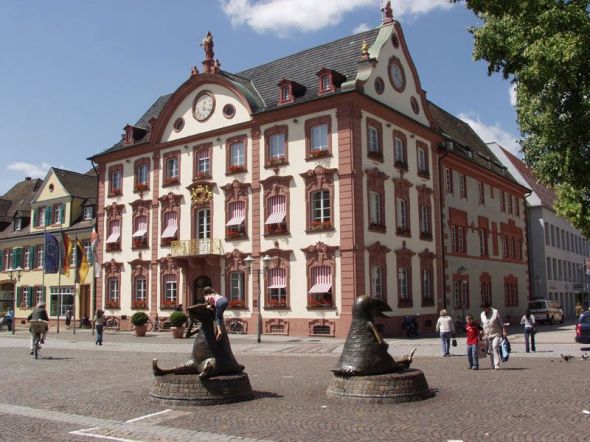
27.05.2014 ZÜRİCH/Switzerland
Venue:Haus Appenzell
Time: 20:00 h Der Abend ist eine geschlossene Veranstaltung und es sind keine Eintrittskarten erhältlich
28.05.2014 SCHAAN/Liechtenstein
Venue:TAK
Time: 20:00 h
30.05.2014 TOGGENBURG/Switzerland
Venue:KlangWelt Festival http://www.klangwelten.com/festival/
04.07.2014 MONTAFON/Austria
Venue:Montafoner Sommer 2014
Huun-Huur-Tu’s Style
Huun-Huur-Tu’s style could be best described as profoundly mysterious. This comes as a consequence of their traditional, ritual laryngeal chants descending from Central Asian land of Tuva. This unique song technique reside on developing an enthralling sound cosmos rich in undertones and overtones.
The members of Huun-Huur-Tu have devoted themselves to learning oId songs and tunes, but at the same time their performances reflect the values of globalization. The whistling of the high-mountain wind forms eerie overtones and postmodern statement. The repeated thrum of a string against wood and hide turns into a meditative, evocative figure straight from the avant-garde. The descendants of isolated Siberian herdsmen make serious, strangely universal music out of some of the planets quirkiest acoustics.
The Tuvan acoustic quartet Huun Huur Tu prove that Tuvan music can take plenty of intelligent innovation. Using traditional instruments and drawing subtly on 20th-century composers, Huun Huur Tu transform ancient songs into complex acoustic compositions.
see more:http://www.jaro.de/artists/huun-huur-tu/
THE STORY BEHİND ANCESTORS CALL
ANCESTORS
The Ene-Sai (ancient name of the Yene sei River), Sayan(mountains), and Tandim(mountains) are our ancient places.
The soft and soulful “sygyt” and “khöömei” are the ancient song of our people .
The ancestors of our “kargyraa” long ago became like gravestones on the steppe.
But among us are still people who sing kargyraa.
The ancestor of khöömei and sygyt long ago became like gravestones on the steppe.
But our hearts are proud(boil in our chest) that among us are still people who sing khöömei.
HUUN-HUUR-TU / US tour, spring 2014
Friday 04/25/2014
Cambridge, MA
First Congregational Church
11 Garden Street
Show: 8:00PM
Tix: 28
From the independent republic of Tuva, bordering Mongolia, Huun Huur Tu performs an ear-twisting vocal technique called Khöömei. In this style, a single vocalist produces two or three notes simultaneously, often a low drone along with a high-pitched whistle. Accompanied by traditional string and percussion instruments, the four-member ensemble sings rhythmic songs that capture the magic of the Siberian steppe.
see more :http://www.worldmusic.org/content/event_page/1902
HUUN-HUUR-TU / US tour, spring 2014
HUUN-HUUR-TU
US tour, spring 2014
April 11 – Dearborn, MI
April 12 – Batavia, IL
April 13 – Cedar Rapids, IA
April 16 – Phoenix, AZ
April 17 – Folsom, CA
April 19 – Los Angeles, CA
April 20 – Portland, OR
April 23 – New York City
April 25 – Cambridge, MA
2008 – Mother-Earth! Father-Sky!
 01 4:21 Mezhegey
01 4:21 Mezhegey
02 3:00 Daglarym
03 4:33 Ergim Syaryym («Song of Hope»)
04 5:43 Artyy Sayir
05 6:27 Erge Chokka («Unneeded»)
06 6:02 Dembildey («Nomad Dance»)
07 6:28 Chashpy-Hem («Chashpy River»)
08 3:56 Ovyur Hadyp
09 4:22 Bai-Taiga
PERFORMANCE SCHEDULE OVERVIEW:
PERFORMANCE SCHEDULE OVERVIEW:http://eyefortalent.com/index.cfm/fuseaction/artist.performance_schedule/artist_id/33/y
CONCERT BOOKING & TECH RIDER
22.05.2014 Wien Sargfabrik Austria
24.05.2014 Nice tba France
26.05.2014 Offenburg Spitalkeller Germany
27.05.2014 Zürich Haus Appenzell Switzerland
28.05.2014 Schaan TAK Liechtenstein
30.05.2014 Toggenburg KlangWelt Festival Switzerland
04.07.2014 Montafon Montafoner Sommer 2014 Austria
read more…http://www.jaro.de/agency-concert-booking-tech-rider/huun-huur-tu/
Archaic voice wonder from Tuva
In 1992, Huun-Huur-Tu was founded by Sasha Bapa, his brother, Sayan, and two other musicians, Kaigal-ool Khovalyg and Albert Kuvezin. Ever since they have tried to focus on the performance of “old and forgotten songs”, as Sasha put it. Sasha, Sayan, and Kaigal-ool were refugees of one of the large state-managed song and dance ensembles that became fixed institutions of the public cultural life during the Soviet era. For decades these ensembles with their glitzy performances of folk music or pseudo folk music offered the only possibility for young musicians to play indigenous music for a living. Throughout the privatization of the music business in the former Soviet Union, many musicians decided to abandon these state ensembles and form their own groups. The musical results have decidedly been mixed.
In an interview for the American producer and critic, Ted Levin, Sasha Bapa explained the meaning of ‘Huun-Huur-Tu’ as the vertical separation of light rays that one often see out on the grasslands just after sunrise or just before sunset. It seems to be a metaphor for the band’s key element– throat-singing that “consists of producing a deep tone in such a way as to create one or two substantial harmonics. The first harmonic is a humming sound in the mid-range, and on top is a loud whistling tone that the singer raises and lowers to create a weird sort of melody by varying the embouchure” (Jon Sobel, Blogcritics Magazine). In this light and through their heavy touring, Huur-Tu can truly be seen as a leading force in popularizing throat singing or khöömei the past decades.
However rooted in Tuvan traditions, it would be a mistake to attribute Huun-Huur-Tu to a folk ensemble. For the first time, Huun-Huur-Tu laced in the pop charts with a remix of the title “Eki Attar”. It became Greece’s No.1 hit in the summer of 2002. The ensemble then went on to release a studio project entitled ‘Spirits of Tuva’ with Djs of various nationalities. They have performed with Ry Cooder, Frank Zappa, The Chieftains, Johnny “Guitar” Watson, Kronos Quartet and L. Shankar among the others. The ensemble’s collaborations do also include other members of JARO: Hazmat Modine, The Bulgarian Voices– Angelite, and Moscow Art Trio.
Huun-Huur-Tu’s Style
Huun-Huur-Tu’s style could be best described as profoundly mysterious. This comes as a consequence of their traditional, ritual laryngeal chants descending from Central Asian land of Tuva. This unique song technique reside on developing an enthralling sound cosmos rich in undertones and overtones.
The members of Huun-Huur-Tu have devoted themselves to learning oId songs and tunes, but at the same time their performances reflect the values of globalization. The whistling of the high-mountain wind forms eerie overtones and postmodern statement. The repeated thrum of a string against wood and hide turns into a meditative, evocative figure straight from the avant-garde. The descendants of isolated Siberian herdsmen make serious, strangely universal music out of some of the planets quirkiest acoustics.
The Tuvan acoustic quartet Huun Huur Tu prove that Tuvan music can take plenty of intelligent innovation. Using traditional instruments and drawing subtly on 20th-century composers, Huun Huur Tu transform ancient songs into complex acoustic compositions.
Huun-Huur-Tu’s Performance
As they began touring in the West, Huun Huur Tu almost single-handedly introduced the outside world to the boundless wealth of Tuvan traditions, thanks in great part to their superior musicianship. Hailing from the high pastures of the Altai Mountains in south central Siberia, the musicians have spent decades honing the overtone singing, instrumental approaches, and vibrant songs of their home.
Steeped in Tuvan folklore, the ensemble wears traditional garb and accompanies themselves on string and percussion instruments, playing galloping rhythms that evoke the vast south Siberian steppe. Their tightly structured pieces often imitate natural sounds, so that a song can be a literal representation of a Tuvan landscape.
Jon Sobel of the Blogcritics Magazine characterized the ensemble’s live performance as: “[…] the music is as warmly human as any folk style, and it’s not all khoomei. The four men have six or seven very distinct singing voices among them. Accompanying themselves on plucked and bowed stringed instruments, percussion, and jaw harps, they emulate biological rhythms in song: heartbeats, breathing, a brain drifting in dreamland, and not least (for a nomadic people), a horse’s trot. The songs are about romantic love, love of place, and (not least) horses, with moods that range from lyrical and thoughtful to joyful, humorous and danceable.” In this sense, the San Francisco Bay Guardian concluded that the Tuvan show: “will ride into your brain and leave hoof-prints up and down your spine.”
read more…http://www.jaro.de/artists/huun-huur-tu/
Gökyüzünü bulutların sardığı zamanlarda bulutların arasından sızan gün ışığı HUUN-HUUR-TU
Gökyüzünü bulutların sardığı zamanlarda bulutların arasından sızan gün ışığı HUUN-HUUR-TU
İlhamlarını Asya Türk kültüründen, Şamanizmin derin derin hissedişinden, doğa sevgisinden, insan sevgisinden alan ve New York Times’ın “Müziğin mucizesi” olarak tanımladığı dünyaca ünlü Huun Huur Tu müzik topluluğu Türkiye’de.
GRUBUN İSMİ NEREDEN GELİYOR?
Farklı bir tarz olsun istedik güneş gibi vursun, çarpsın anlamında. Gökyüzünü bulutların sardığı zamanlarda bulutların arasından sızan gün ışığı demek.
Daha önce dünyaca ünlü Frank Zappa, The Cheieftains, Guitar gibi gruplarla çalışmalarda bulundunuz, Türkiye’den kimlerle çalışmak isterdiniz?
Tam olarak ünlü müzisyenlerinizi tanımıyoruz, bu konuda bilgi alıp eğer o müzisyenler de isterlerse Türkiye’de de çalışmalar yapmak isteriz.
1997’de Türkiye’de bulunduğunuzda Bulgar grubu Angelite ile konser verdiğinizde, o zamanki Türkiye ile şimdiki Türkiye arasında bir fark görüyor musunuz?
Daha önce İstanbul’a geldik, şu an ilk defa Anadolu’ya geliyoruz. Bir karşılaştırma yapmamız oldukça güç.
Şarkılarınızın ana teması genelde hikâye odaklı, mesela chira khoor (cırra hor) şarkısında kocası kendisinin kol ve ayaklarını kestiğinde kendi kendini iyileştiren altın prenses Aldyn (dangynal)’ın hikayesinden söz eder.
Bu hikâyelerin ve şarkıların ilham noktası nedir?
Ortaya çıkış serüveninden bahseder misiniz?
Bu şarkıları biz tarih boyunca, hayat boyunca gezerek, Tuva da ve Moğolistan’da yaşayan halk hikâyelerinden çıkarıyoruz. Dilden dile yayılarak günümüze ulaşmış mistik hikâyeler.
NEDEN GELENEKSEL ÇALGI ALETLERİ KULLANIYORSUNUZ?
Bunları aletleri öğrenme süreciniz aileden mi geliyor yoksa müzikle uğraşmaya başladığınızda mı merak sardınız?
Bunlar bizim geleneksel aletlerimiz, babadan aileden gelmiştir. İlk öğrenme sürecimiz gelenekten ve ailemizden gelmektedir. Ayrıca bazı çalgı aletlerini grubumuzdan Alexsey Saurıglar yapıyor.
Müzik hayatınızdaki en büyük başarınız olarak tanımladığınız olay neydi?
Sahneye çıkışımız, böyle farklı bir müzik yapmış olmamız bir başarıdır. Bizim için de seyirciler için de birer hatıra oluyor. Yaptığımız çalışmalar hayatlarımızdan bir sahnedir. Halk yaptığımız müziği seviyorsa biz devam ederiz.
Favori şarkılarınız arasında en çok sevilen fly fly my sandess,orai la boldula gibi parçalar sizce neden bu kadar sevildi?
Halk bu şarkıları belki daha iyi hissediyor olabilir. Kelimelerin anlamlarını bilmeseler bile duyguları bu şarkıları sevmelerini sağlıyor.
Albüm isimleriniz; “Sürümde 60 atım var”, “Bir kartal olarak doğmuş olsaydım eğer” gibi geleneksel bir grup olduğunu çağrıştırıyor, geleneklerinizi özellikle vurgulamak için mi bu isimleri seçtiniz?
Elbette ki, ayrıca daha ayırt edici olsun, anlamları derin olsun diye bu tür isimler seçiyoruz.
9-Kayseriyi nasıl buldunuz?
Dağlar gözümüze çarptı ve muhteşemdi, burada kendimizi evimizde gibi hissettik. Tuva’dan, Sayan dağlarından çıkan Türklerin, neden buraya dağlık bölgeye geldiklerini anlıyoruz, öz ataları da dağlarda yaşamışlardı
10-Müziklerinizdeki ilham kaynağı nedir?
Bizim memleketimiz, dağlarımız, kültürümüz en büyük ilham kaynağımız. Amerikalı etnik müzik yapan bir müzisyen etnik müziği şöyle tanımlar; bizim yaptığımız müzik temel oluşturur. Bu şarkıları dinlerken dinleyicinin gözünün önünde resim çizer, o bölgelere gitmeyen kişi bu müzikleri dinleyip gözünde canlandırabiliyor. Bizim ilham kaynağımızın çıkış noktası da tam olarak, tabiatla insanın karşılaşması macerasını ve sevgisinin mesajını veriyoruz müziklerimizde, tabiat ve insan sevgisini buluşturuyoruz.
http://www.internethaber.com/muzigin-mucizesi-turkiyede-517756h.htm
Huun-Huur-Tu – Folk music groups
Huun-Huur-Tu (Tuvan: Хүн Хүртү Khün Khürtü, Russian: Хуун-Хуур-Ту) is a music group from Tuva, a Russian Federation republic situated on the Mongolian border.
The most distinctive characteristic of Huun Huur Tu’s music is throat singing, in which the singers sing both the note (drone) and the drone’s overtone(s), thus producing two or three notes simultaneously. The overtone may sound like a flute, whistle or bird, but is actually solely a product of the human voice.
The group primarily uses native Tuvan instruments such as the igil, khomus (Tuvan jaw harp), doshpuluur, and dünggür (shaman drum). However, in recent years, the group has begun to selectively incorporate western instruments, such as the guitar. While the thrust of Huun Huur Tu’s music is fundamentally indigenous Tuvan folk music, they also experiment with incorporating not only Western instruments, but electronic music as well.
PROJECT ETERNAL Huun Huur Tu & Carmen Rizzo
Huun Huur Tu & Carmen Rizzo
Selections from project eternal premiere in Perm, Russia.September 16,2009
Huun-Huur-Tu (Hün Hürtü)
GÜNIŞIĞI
Huun-Huur-Tu (Tuvaca: Хүн Хүртү Khün Khürtü) Rusya Federasyonu’nun Moğolistan ile arasındaki Türk soylu Tuva bölgesinden çıkmış bir müzik topluluğudur.
Müziklerinin ayırt edici özelliklerinden biri boğaz vokalidir. Grup ayrıca igil (egil, kıl-kopuz da denilir), kopuz, doşpuluur (dopşulduur, topşuluur da denilir), tungur (şaman davulu, tıngırtı) gibi enstrümanları kullanmalarıyla ünlüdür. 1992’de Kungurtuk adıyla kurulan grubun ilk üyeleri Kaygal-ool Hovalıg, Alexander Bapa, Sayan Bapa ve Albert Kuvezin’di. Bir süre sonra Hün Hür-Tü (kün kürtü, gün gürtü , güneş ışınları) adını alan grubun şarkılarının çoğu step yaşantısını yansıtan geleneksel Tuva ezgilerinden oluşmaktadır.
Huun-Huur-Tu
Huun-Huur-Tu (Tuvan: Хүн Хүртү Khün Khürtü, Russian: Хуун-Хуур-Ту) is a music group from Tuva, a Russian Federation republic situated on the Mongolian border.
The most distinctive characteristic of Huun Huur Tu’s music is throat singing, in which the singers sing both the note (drone) and the drone’s overtone(s), thus producing two or three notes simultaneously. The overtone may sound like a flute, whistle or bird, but is actually solely a product of the human voice.
The group primarily uses native Tuvan instruments such as the igil, khomus (Tuvan jaw harp), doshpuluur, and dünggür (shaman drum). However, in recent years, the group has begun to selectively incorporate western instruments, such as the guitar. While the thrust of Huun Huur Tu’s music is fundamentally indigenous Tuvan folk music, they also experiment with incorporating not only Western instruments, but electronic music as well.

